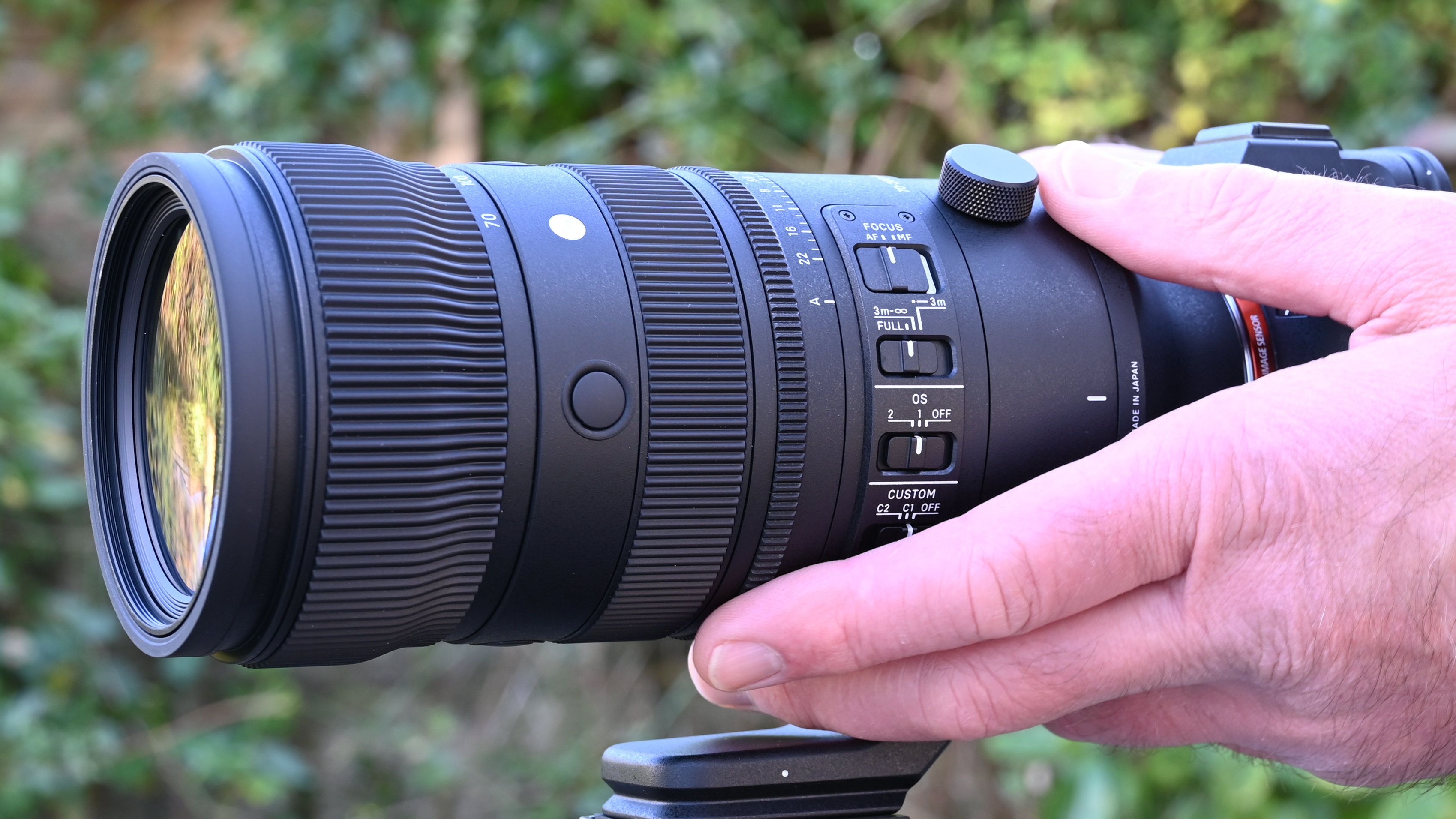
The Sigma 70-200mm F2.8 DG DN OS Sports has a tough act to follow. We’ve always been big fans of the DG OS HSM Sports edition of the lens for Canon and Nikon DSLRs. It’s nothing short of magnificent and our only real criticism is that it’s a weighty beast, tipping the scales at 1,805g. The new ‘DN’ edition for Sony E-mount and Leica L-mount cameras shaves 470g off the weight, making it just over a pound lighter and much more easily manageable.

While the L-mount version of the DN lens will suit Panasonic S-system shooters, the bigger fan base is likely to be in the Sony camp. In that territory, the Sigma goes up against the own-brand Sony FE 70-200mm f/2.8 GM OSS II and looks very good value at little more than half the price of the Sony G Master lens.
Specifications
Mount: Sony E (FE) Leica L
Full-frame: yes
Autofocus: yes
Stabilization: yes
Lens construction: 20 elements in 15 groups
Angle of view: 34.3 to 12.3 degrees
Diaphragm blades: 11
Minimum aperture: f/22
Minimum focusing distance: 0.65m (W) 1.0m (T)
Maximum magnification ratio: 0.19x
Filter size: 77mm
Dimensions: 90.6 x 207mm
Weight: 1,335g
Key features
As a 70-200mm f/2.8 trinity telephoto zoom, the Sigma aims to satisfy a broad range of sports, wildlife, portrait, wedding and event photographers, and more besides. That’s a very wide remit. To keep everybody happy, a key feature is super-fast and virtually silent autofocus, driven by two HLA (High-response Linear Actuator) motors, or linear stepping motors by another name, which control two separate focusing groups of elements within the lens.
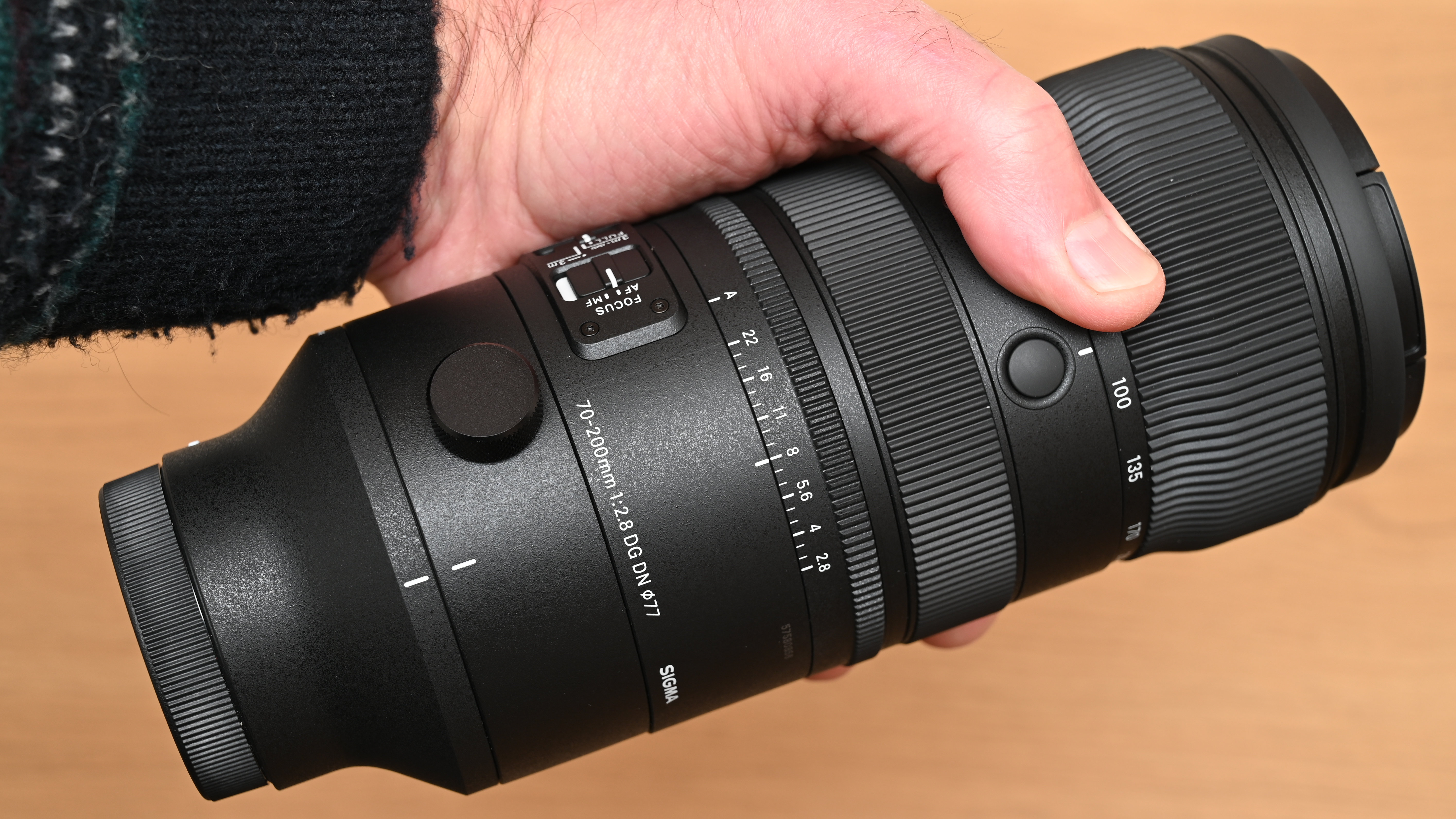
Even with fast and accurate autofocus, sharpness can still be degraded by camera-shake, so another headline feature is optical stabilization. This is driven by Sigma’s latest OS2 algorithm, which gives 7.5-stop effectiveness at the short end of the zoom range, shrinking to a still very respectable 5.5-stop performance at the long end. It’s a dual-mode switchable system, for static and panning shots, the latter working when panning in any camera orientation, horizontal, vertical or diagonal.
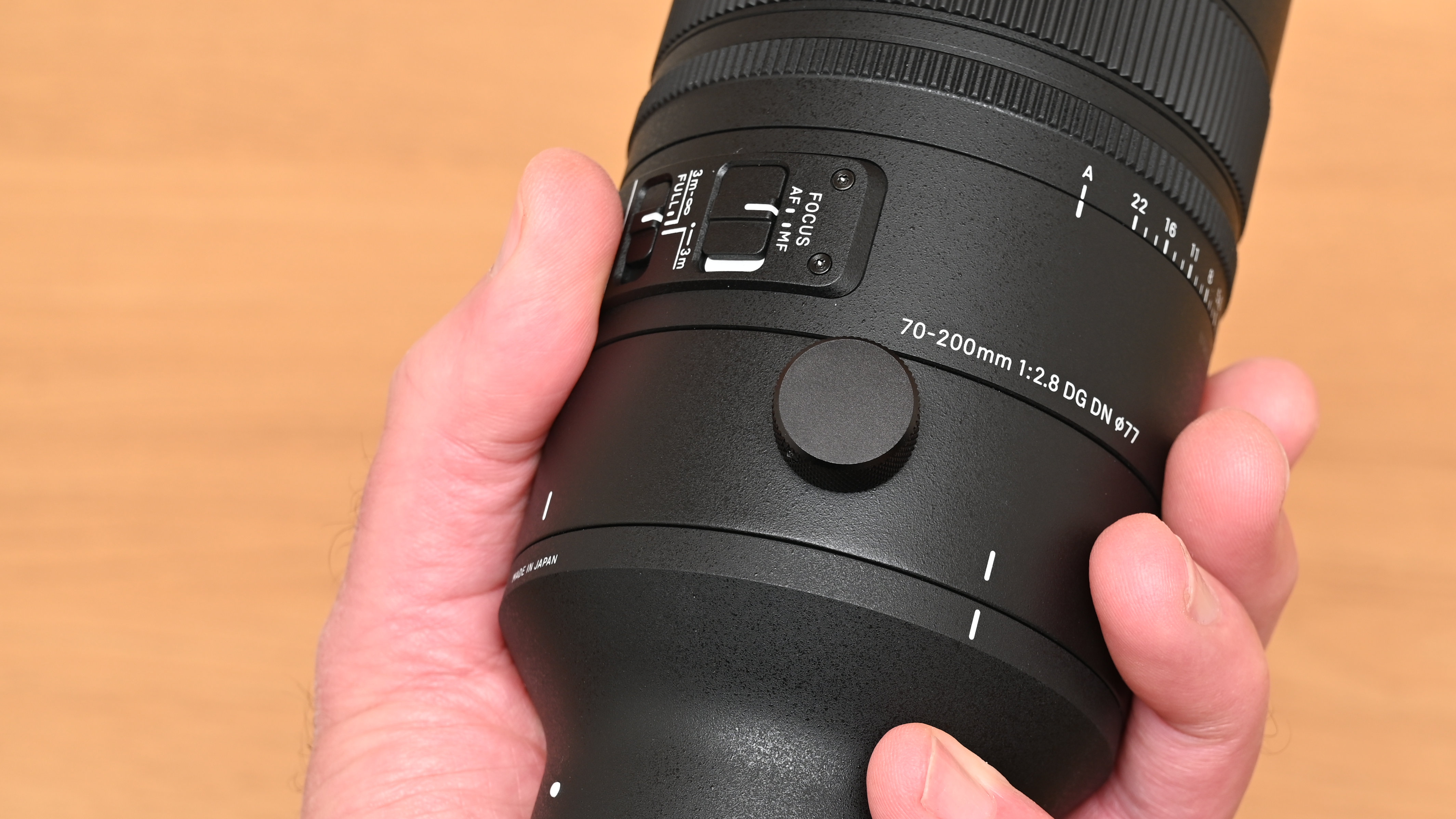
There’s no shortage of high-tech glass, with three aspherical elements, two SLD (Special Low Dispersion) elements and six top-grade FLD (‘Fluorite’ Low Dispersion) elements in the mix. The overall aim is to maximize sharpness, clarity and color accuracy while minimizing distortions and chromatic aberrations. Nano-structure and conventional coatings combine to keep ghosting and flare to a minimum. The optical path is also designed to minimize focus breathing, which is a bonus for videographers.
Macro potential definitely isn’t a feature of this lens. The minimum focus distance is 0.65m at the short end of the zoom range, stretching to 1.0m at the long end, resulting in a maximum magnification ratio of 0.19x. That’s pretty average for a 70-200mm zoom and nothing special. For example, the more inexpensive and lightweight Tamron 70-180mm F2.8 Di III VXD for Sony cameras doesn’t quite match the Sigma for telephoto reach, but boasts 0.5x macro magnification.
Build and handling
Aiming for robustness while keeping the weight off, the lens is made mostly from a mix of carbon fiber-reinforced plastic and Sigma’s ‘Thermally Stable Composite’. Both are high-quality materials, and the lens features a comprehensive set of weather-seals along with Sigma’s usual coated brass mounting plate. Suffice it to say the build quality feels very convincing.
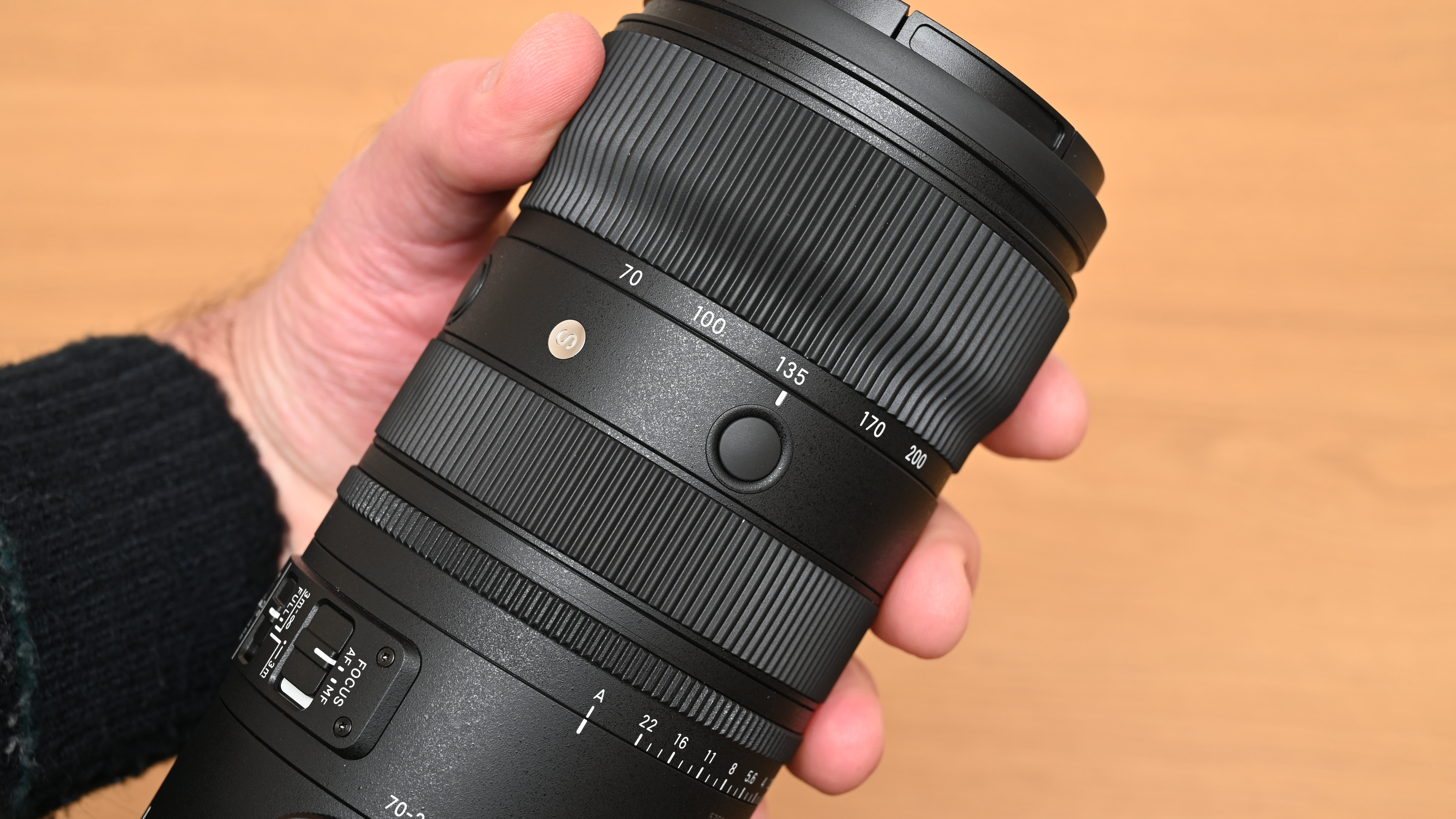
There’s plenty of handling exotica. A set of four switches at the rear give access to AF/MF focus modes, a 3-position autofocus range limiter that can lock out the short or long end, an optical stabilizer on/off and mode switch, and a switch for selecting two custom modes. You can set up custom modes and apply fine-tuning to the likes of stabilization and the autofocus range limiter positions by using the optional Sigma USB Dock but this is only available for the L-mount version of the lens. Sigma also only makes its compatible 1.4x and 2.0x teleconverters in L-mount, leaving Sony out of the equation.
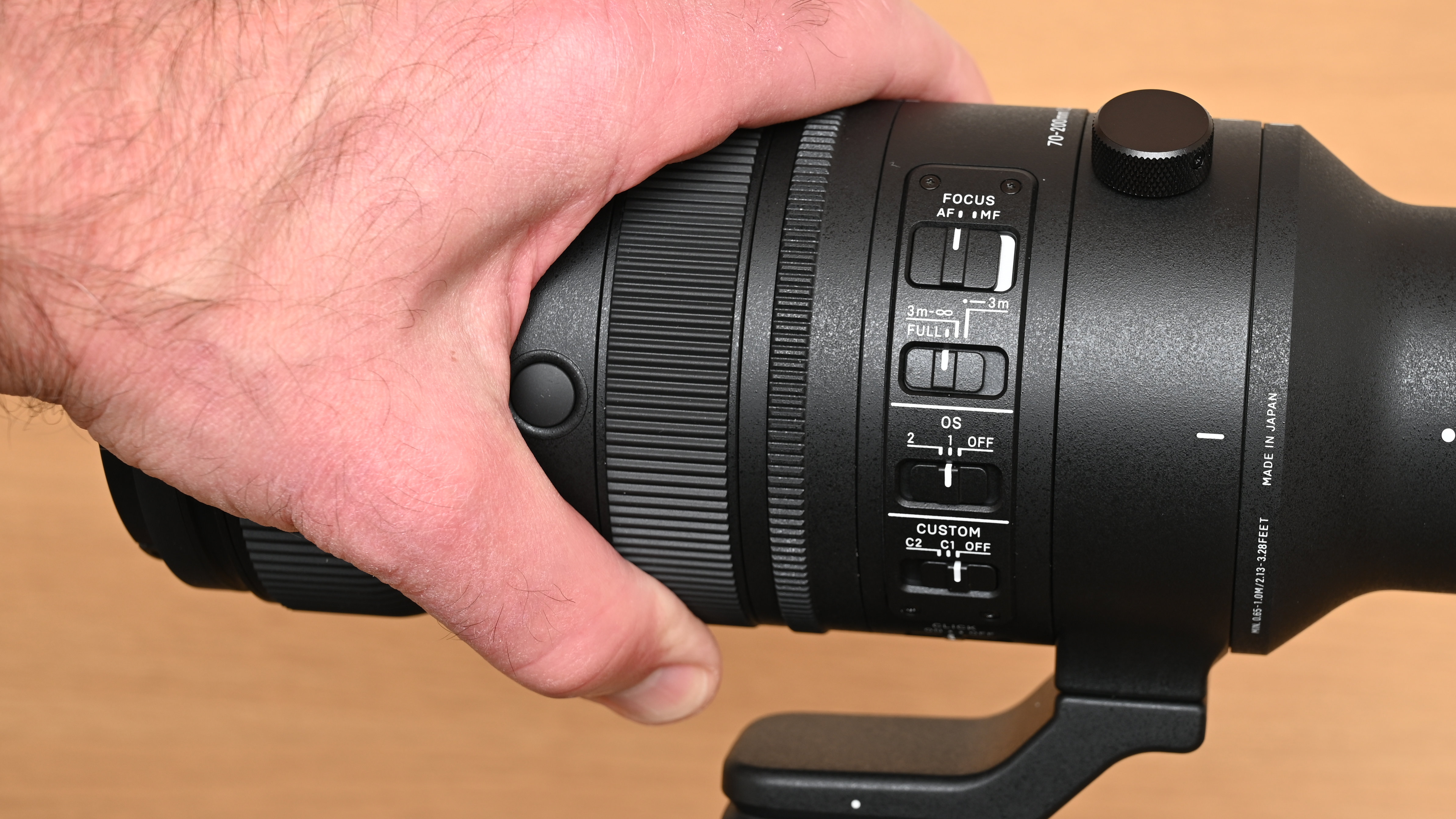
Just beneath the four main switches is a Click on/off switch for the aperture control ring, enabling one-third f/stop increments for stills or stepless adjustment for video.
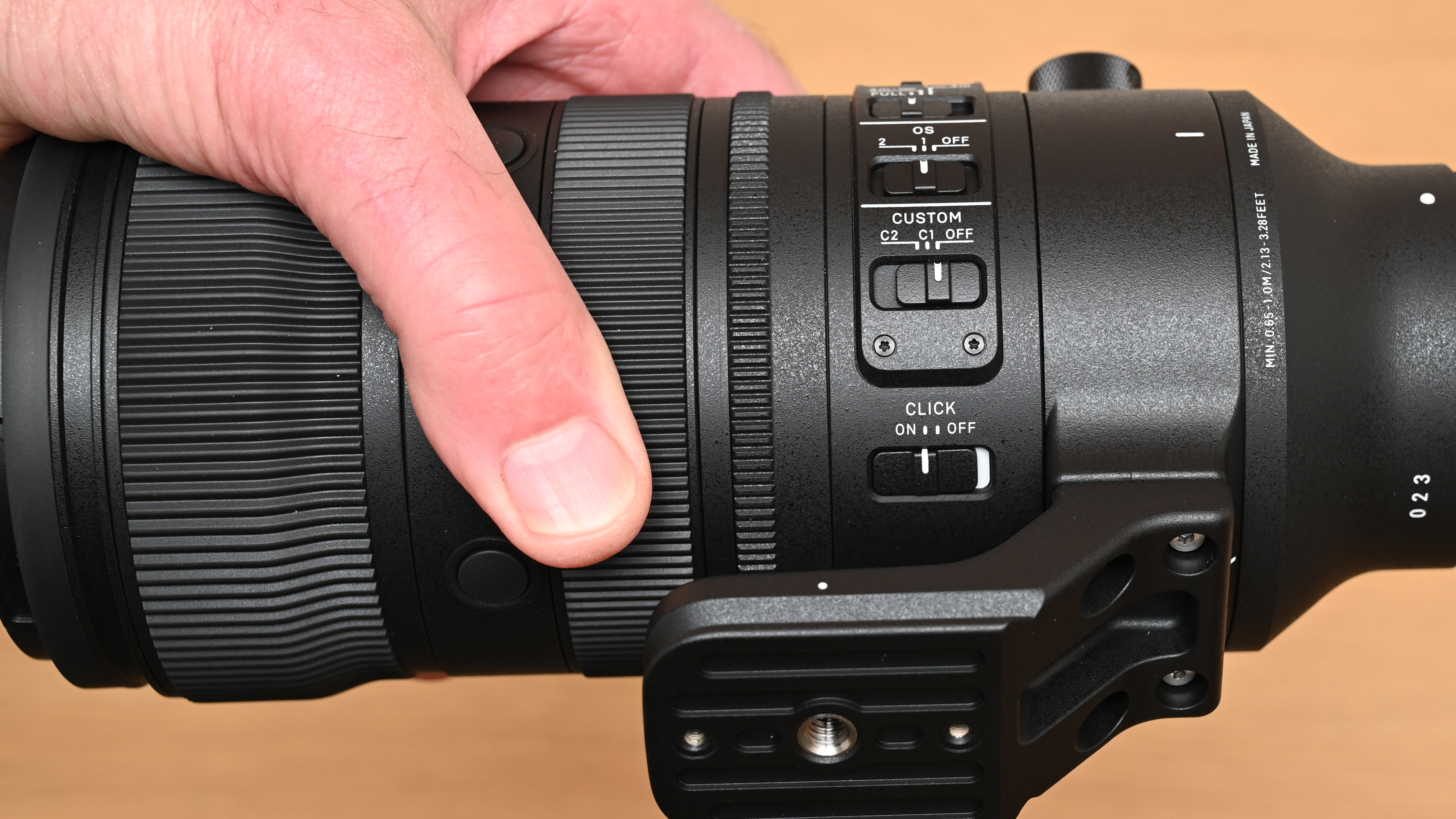
On the other side of the lens, there’s a Lock switch for locking the aperture ring in its Auto position. We like that, as it avoids the risk of nudging the position of the aperture ring accidentally when controlling the aperture from the camera body.
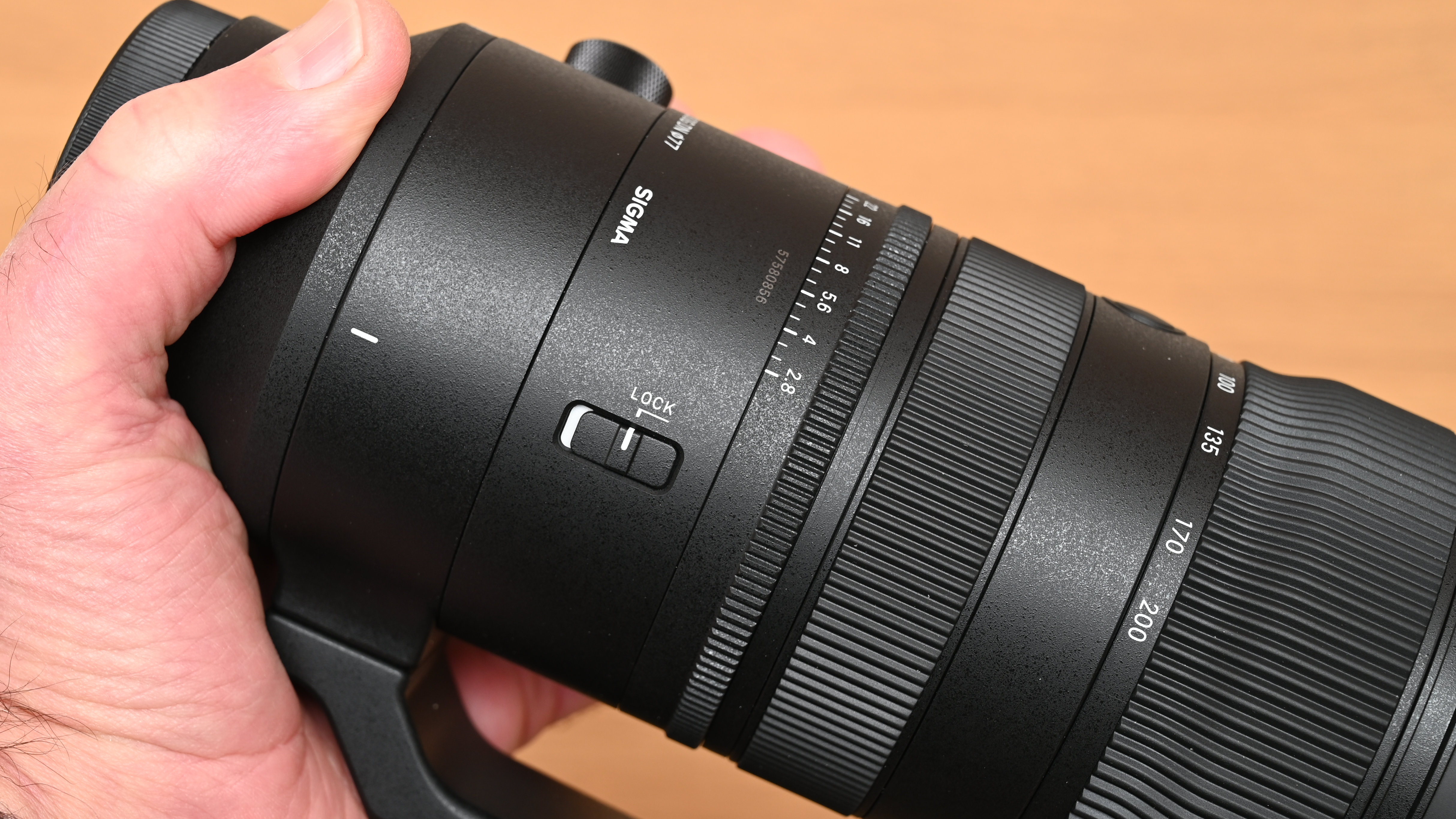
The zoom and focus control rings work with smooth precision and, between the two, there’s a rank of three customizable AF-hold buttons, which fall naturally under the thumb when shooting in any orientation.
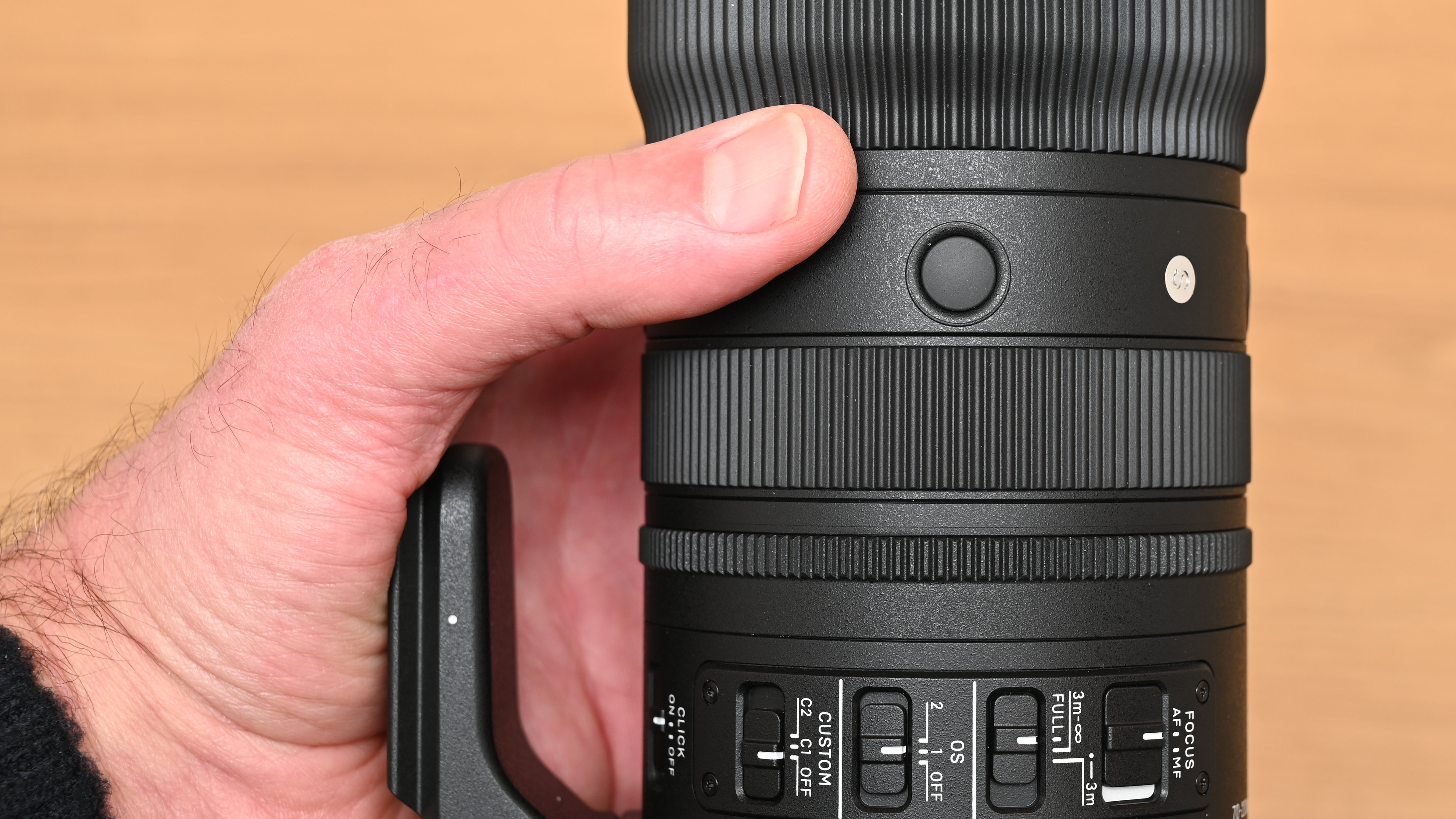
Moving back to the rear of the lens, there’s a tripod mounting ring which again rotates smoothly, this time having click-steps at 90-degree intervals. However, the ring isn’t removable and if you want to detach the tripod foot to save space, it’s a fiddly process involving the removal of four hex screws.
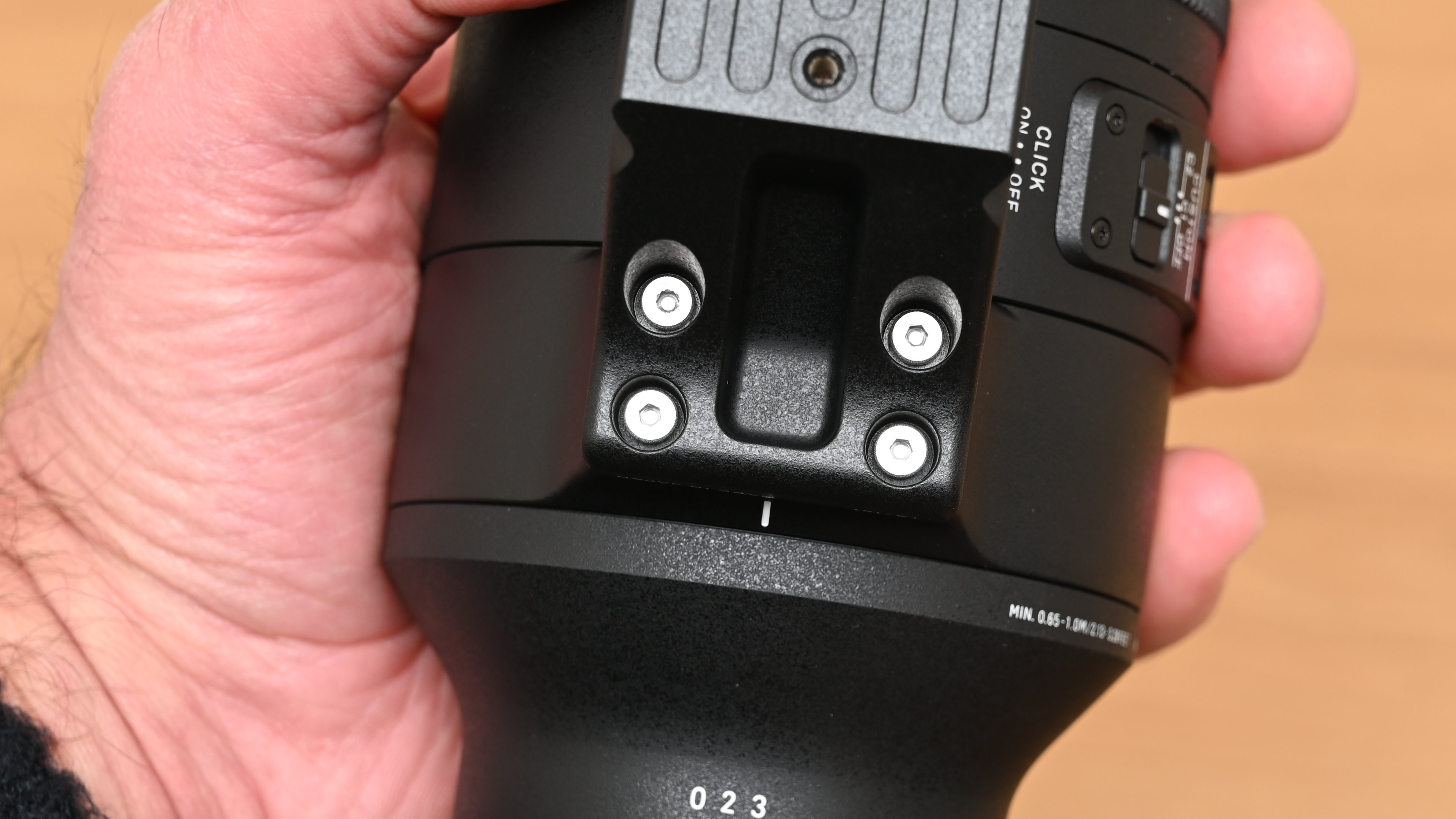
On the plus side, the mounting foot itself is made of sturdy magnesium alloy and has an Arca-Swiss profile, so you can attach it directly to any compatible tripod/monopod head.
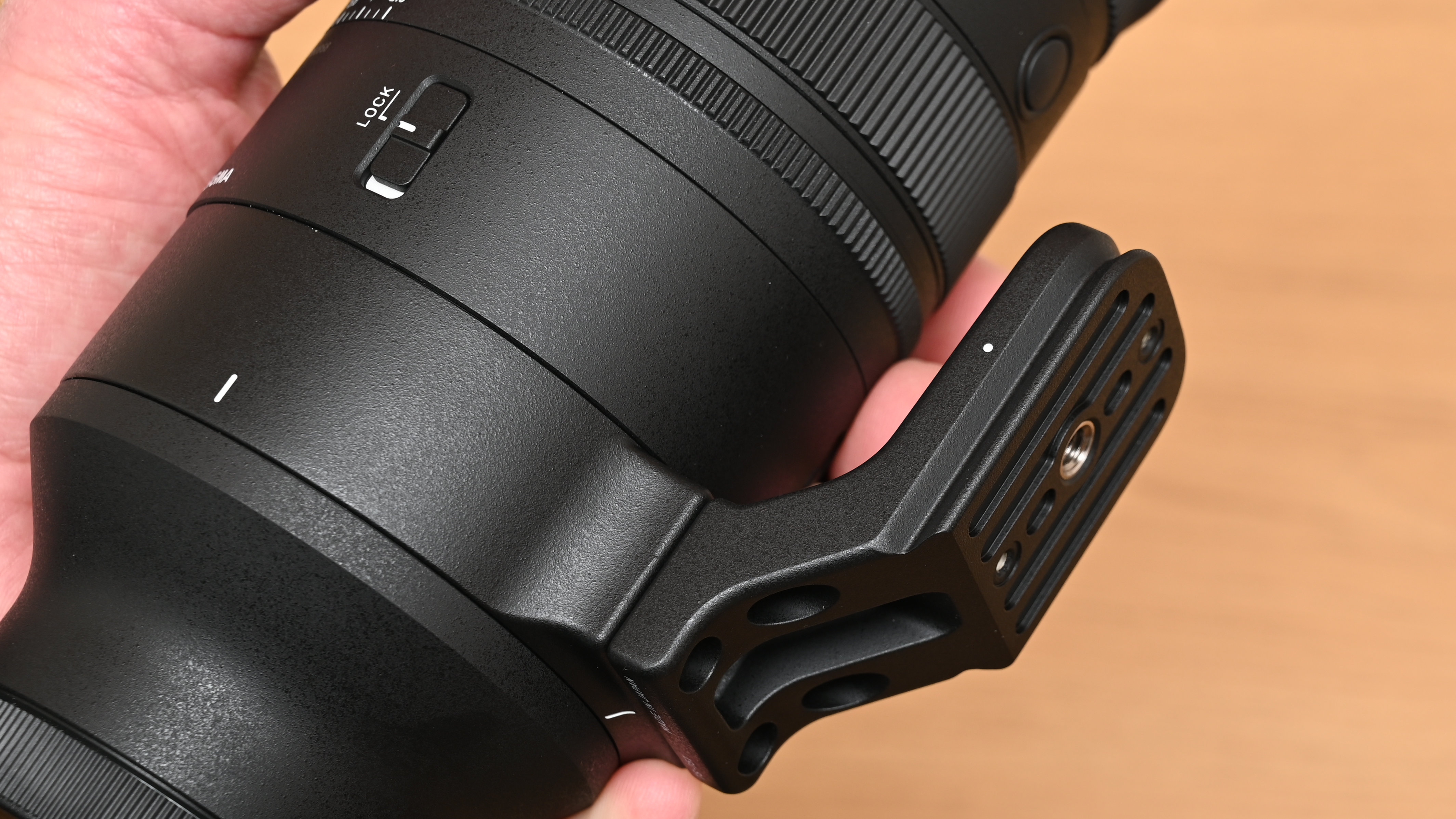
The lens hood has a circular rather than petal-shaped profile but is of similarly impressive build quality as the lens itself, and locks in place with a knurled thumbscrew. As usual for a 70-200mm f/2.8 lens, both of the zoom and focus mechanisms are fully internal, so the front element neither rotates nor extends at any setting.

Performance
We expect any modern lens to be sharp these days, especially when it’s designed with the enthusiast and professional markets in mind. The Sigma certainly satisfies in this respect, with mostly excellent sharpness and clarity. Our only slight reservation is that we found that levels of sharpness dropped off a little when combining the shortest zoom setting with a close focus distance, at the widest aperture of f/2.8. The same goes for shooting at a focal length of 100mm with most aperture settings. However, sharpness for close-ups really comes on strong at medium to long zoom settings. Levels of sharpness at longer focus distances, that you’d typically use for telephoto shooting, are superb throughout the entire zoom range, even at f/2.8.
What’s more of a moveable feast in lens technology is the quality of bokeh. The Sigma really impresses here as well, with a beautifully creamy look to defocused areas within images. There’s also a very natural roll-off between focused and defocused areas, as shown in our example shots below. You’ll also see that bokeh disks are nicely rounded and free of the dreaded ‘onion ring’ effect, which can show up as concentric circles within defocused lights and other bright spots. What’s more, bokeh disks remain good when stopping down a little, thanks to the very well-rounded 11-blade aperture diaphragm.

There’s only minimal vignetting, even when shooting wide-open at f/2.8. Control is also very good over chromatic aberrations, although pincushion distortion can be rather noticeable at longer focal lengths, at least with in-camera correction disabled.
In our tests, autofocus proved accurate and its speed was able to keep pace with fast-moving subjects. Optical stabilization also lives up to its claims, helping to ensure an excellent hit rate even under very dull lighting. All in all, the performance is highly impressive.
Sample images














Lab results
We run a range of lab tests under controlled conditions, using the Imatest Master testing suite. Photos of test charts are taken across the range of apertures and zooms (where available), then analyzed for sharpness, distortion and chromatic aberrations.
We use Imatest SFR (spatial frequency response) charts and analysis software to plot lens resolution at the center of the image frame, corners and mid-point distances, across the range of aperture settings and, with zoom lenses, at four different focal lengths. The tests also measure distortion and color fringing (chromatic aberration).
Sharpness:
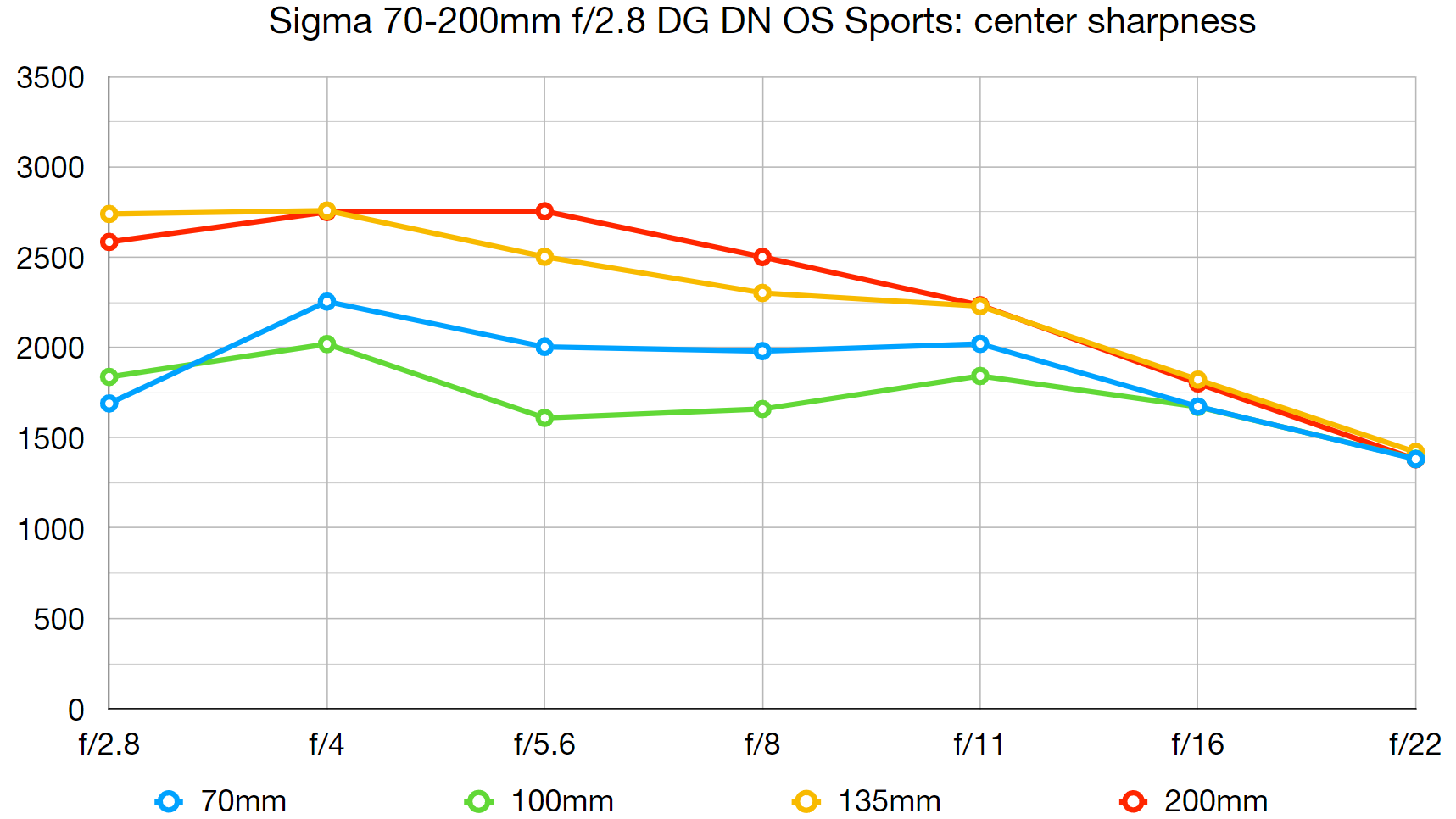
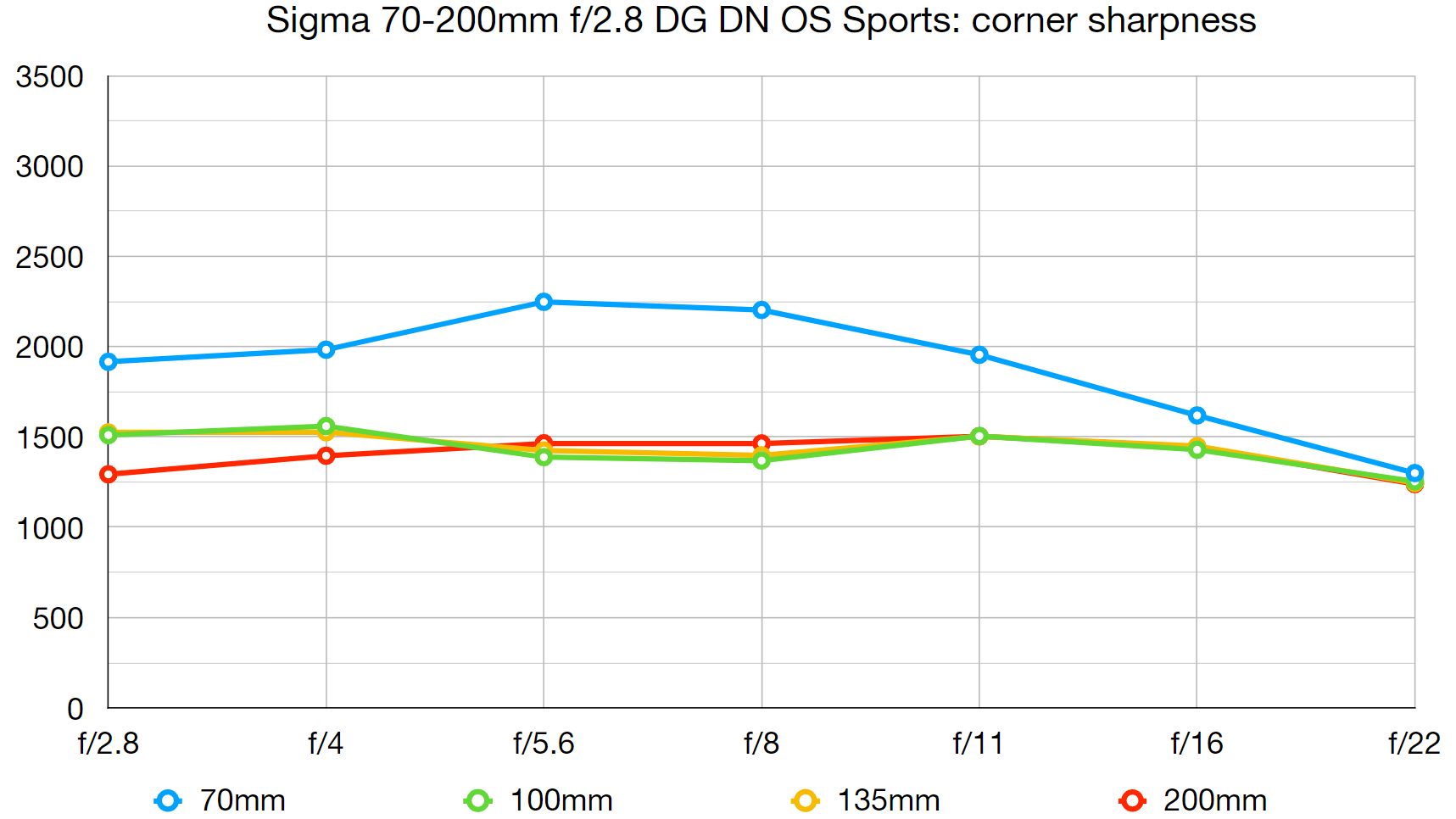
When taking close-range shots of lab test charts, we found that sharpness at 70mm dropped off a little at f/2.8. At a 100mm focal length, it’s not overly impressive throughout the zoom range. However, in the 135-200mm zoom sector, close-range sharpness is excellent. At longer focus distances, sharpness is highly impressive throughout the entire zoom range, especially at wide to medium aperture settings.
Fringing:
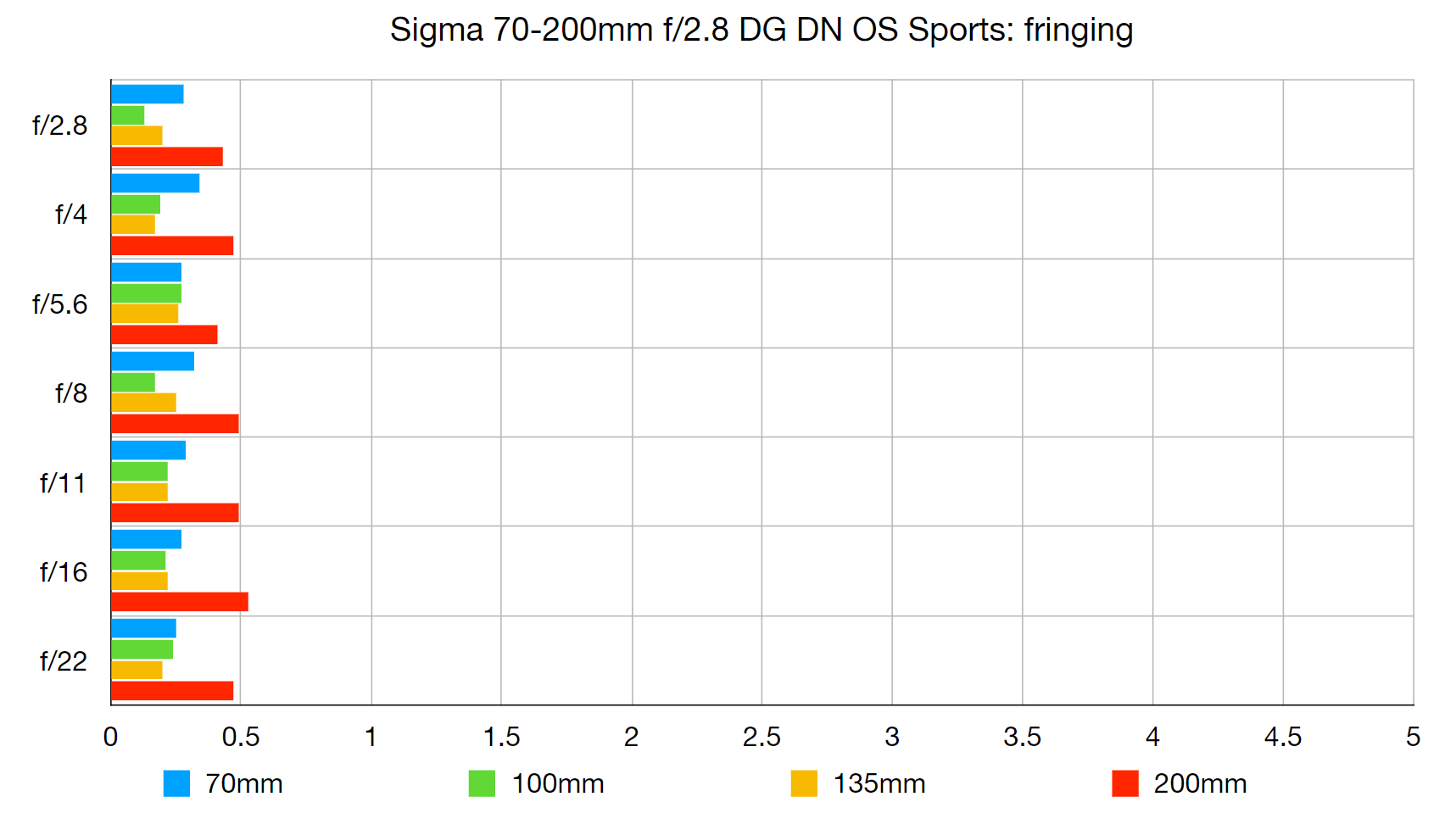
There’s very little color fringing to be seen at an combination of focal length and aperture setting, even right out at the extreme edges and corners of the image frame. It’s technically a bit worse at the long end of the zoom range but still very difficult to spot, even with automatic correction disabled.
Distortion:
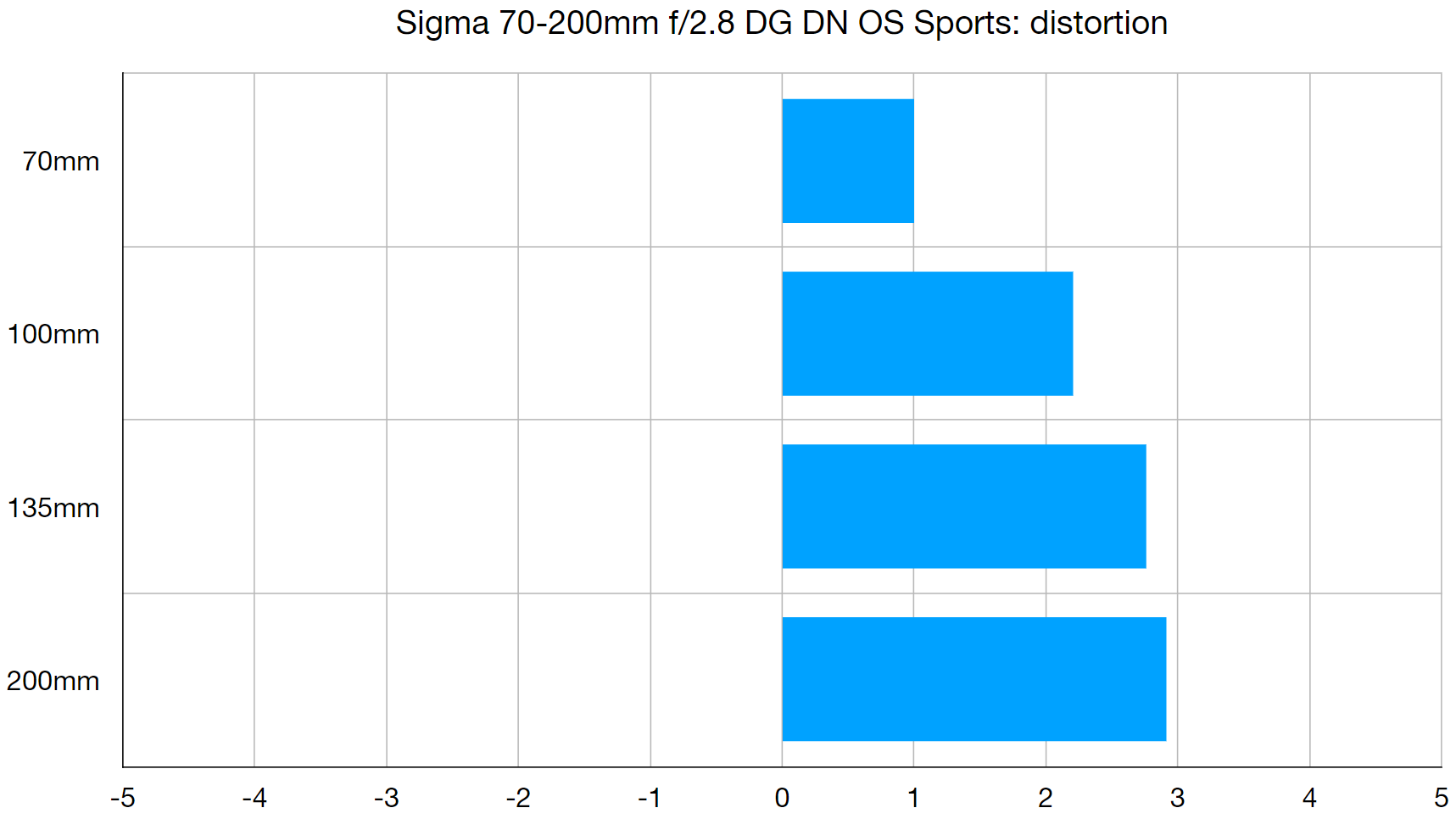
Pincushion distortion can be quite noticeable in the 100-200mm sector of the zoom range. Typically for a lens designed for mirrorless cameras, however, highly effective in-camera correction is available.
Verdict
This Sigma lens really delivers. It ticks pretty much every box on the wish list of even the most demanding photographers. Build quality is of a pro-grade standard, complete with comprehensive weather-seals, handling is utterly refined with copious hands-on controls, autofocus is ultra-fast and virtually silent, and optical stabilization is highly effective. More crucially, image quality combines razor-sharpness with buttery smooth bokeh. And if all of that’s not enough, it’ll also save you a big chunk of money, compared with directly competing own-brand Sony E-mount and Panasonic L-mount lenses.






